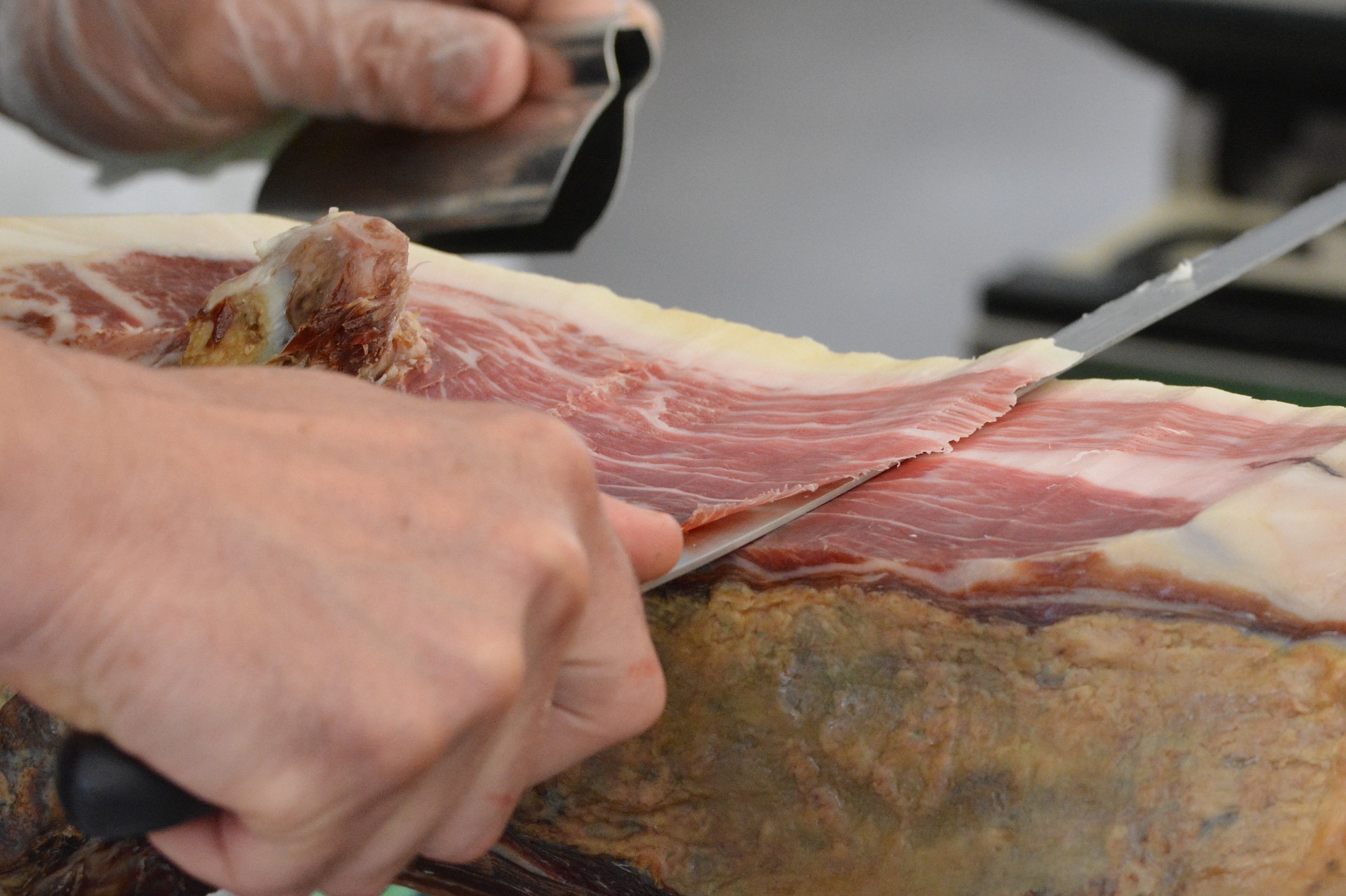Ciauscolo salami from Muccia, Italy
Within the territory of Macerata Province, in those areas closest to the Apennine Mountains, there began the tradition long ago of making particularly pleasant-tasting salami called “ciauscolo”. In times past, it was called “ciabusculum” and so, clearly, its origins date as far back as the Roman Empire. Let’s come back to the present, though, and take a look at how this tradition has been passed down from generation to generation so that we are able to still enjoy this delightful, soft salami today.
In the past, every peasant family raised its own pig, so as to ensure a year-long supply of fat and flavorful meat for the family members. Traditionally this animal was raised on acorns, corn, barley, oats, pumpkins, sugar beets … and everything the countryside can offer and allowed to grow for at least twelve months. This meant that there would then be plenty of flavor-rich meat with which to make salumi – a variety of cured meats in many forms. The Ciauscolo was not made from the choicest meats (those were saved for prosciutto, lonza, coppa and salame). On the contrary, what goes into a Ciauscolo are the scraps from processing all of the other meats, along with a generous amount of lard (from 35 to 50%) and seasonings such as salt, pepper, wild fennel, orange peel, garlic and a bit of wine. This mixture is then finely ground to an almost creamy consistency, put into its casing and left to dry. In the old days, the salamis were hung near the fireplace in the home, so that as they dried, they also took on a lightly smoked aroma. This medium-sized salami is ready to be eaten after a short ageing of approximately one month, perhaps slightly longer. It is excellent when simply spread on a slice of warm bread. This tasty treat is made in a number of places in the area between Visso and Muccia.
A word of warning, however, a strict observance of the traditional norms which regulate the final phase of processing is not sufficient to guarantee a good ciauscolo; what is even more important is controlling how the animal lived and how it was fed! The goodness of a salume of any kind largely depends on the health and nutrition of the pig itself. Unfortunately, the food industry aims for mass production and often neglects these other aspects. We are giving you a sure tip, a name you can trust for finding the “real thing”: Salumificio Bartolazzi, in Muccia. www.salumificiobartolazzi.it
This article was provided by Luigi Silvestri, a professional consultant, living in and promoting the Italian Marche Region and was written by Gianfranco Mancini.
Similar Stories:
- So What Is This Thing Called Authenticity?
- Savory Layered Vegetable Torte
- Alger Family Farm
- Five Kickstarter Videos Show How It’s Done
- A Young Generation Sees Greener Pastures in Agriculture




